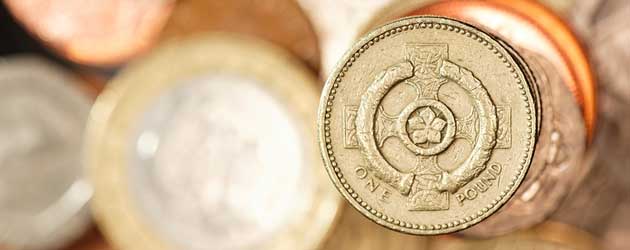
Despite a relatively sparse economic docket this week the Pound has managed to post strong gains against two of its most-traded currency counterparts.
Sterling is just under 2.0 cents better off against the US Dollar and around half a cent stronger against the Euro than it was at the beginning of this week’s session. The Pound hit 7-month highs against both currencies along the way.
It has been a combination of downbeat sentiment, in America and Europe, and further speculation that interest rates will be raised sooner-than-anticipated in Great Britain, that has given rise to gains for GBP/USD and GBP/EUR
Initially Sterling advanced against the US Dollar as investors were still reeling from the impact of last Friday’s disappointing US Non-farm Payrolls print of 162,000, which was significantly worse than the market expectation of 180,000.
The Pound continued its good form as fears of a potentially messy military intervention strike in Syria eased slightly due to hopes that an agreement could be reached for the Middle Eastern country to surrender its chemical weapons pile. This positive development boosted risk sentiment and led to a cooling of defensive inflows across the Atlantic into the safe haven Dollar.
Against the Euro, Sterling has benefitted so far this week from a couple of pieces of discouraging Eurozone economic data. Firstly, Italian GDP was revised down from -0.3% to -0.2% in the second quarter. And secondly, Industrial Production in the Eurozone was reported to have fallen dramatically faster than markets had anticipated, at -1.5% on a monthly basis and -2.1% on an annual basis.
However, the overriding positive influence on the Pound to US Dollar and Pound to Euro exchange rates this week was the surprisingly strong UK Unemployment report. The headline jobless rate fell from 7.8% to 7.7% – one step closer to the Bank of England’s 7.0% threshold for keeping interest rates at the current record low – and the Claimant Count tumbled by -36,300 to its lowest level since February 2009. The robust report fanned the flames of rate hike speculation and subsequently sent UK 10-year Gilt yields higher, which in turn boosted the appeal of the Pound to speculative investors.
Yesterday a shockingly strong US Initial Jobless Claims score of 292,000 – the lowest reading since October 2007 – threatened to spark a US Dollar recovery. But the prospect of an aggressive reduction to the Federal Reserve’s asset purchasing scheme was swiftly forgotten as markets learned that two states’ jobless claims totals were omitted from the results: essentially the data is incomplete and therefore inaccurate.
Furthermore, the Pound weathered a potentially stormy situation as BoE Governor Mark Carney explained his forward guidance scheme to the UK Treasury. Despite the mention of possible stimulus in the future if British data runs out of steam, markets were generally unmoved by the Central Banker’s comments as they did not suggest that the BoE was seriously considering any further easing measures at this juncture to bring down the yield on UK government debt.
GBP/EUR hit a 7-month high of 1.1923 this week and could look to mount a rally towards key psychological resistance at 1.2000 if UK data continues to impress.
GBP/USD struck a 7-month high of 1.5840 yesterday and could strengthen towards technical resistance at 1.5880 if US data disappoints later this afternoon. If traders are unimpressed by the Fed’s taper decision next week, it is entirely possible that Sterling could rally towards 1.6000.

Comments are closed.